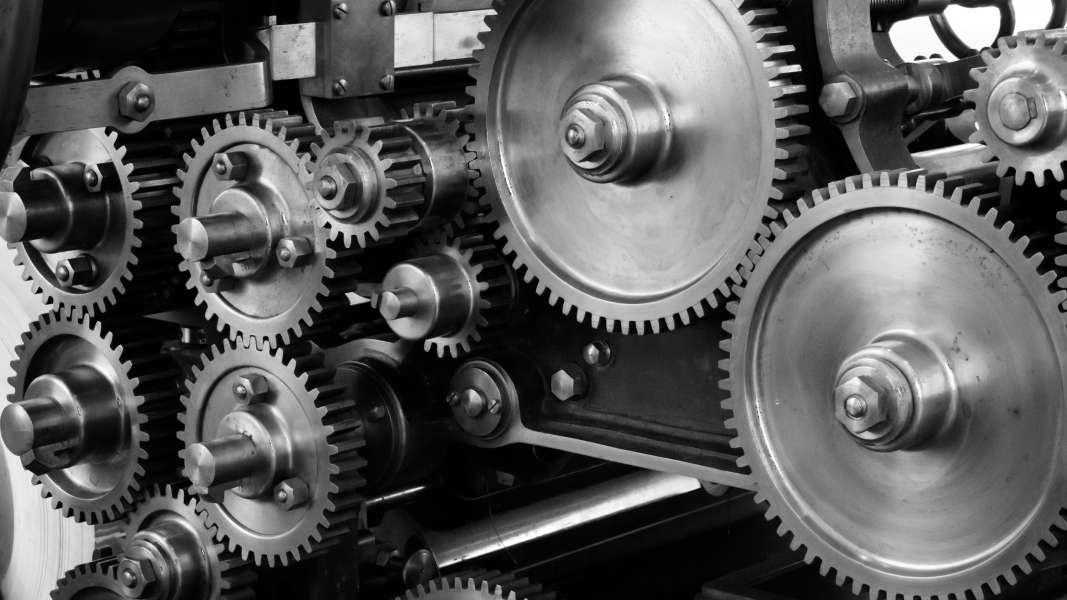
How To Hire A Millwright
July 29, 2022

A millwright, also known as an industrial mechanic, is a key employee in any organization running industrial machinery. These highly skilled professionals are responsible for ensuring a safe and productive working environment through the installation, maintenance and repair of critical equipment.
Millwrights work in a variety of settings, including factories, production plants and construction sites. Whatever the setting though, they must possess mechanical expertise along with a broad range of skills and abilities that allow them to perform their role to the highest standard.
This article explores the qualities of an effective millwright and how recruiters can use pre-employment tests to measure those qualities in the early stages of recruitment.
What should a millwright be able to do?
Whilst millwrights are employed in a broad range of industries, the core function of the role is the same across the board - to ensure the safe and efficient operation of equipment and machinery.
To do this, they carry out various essential tasks:
- Working with engineers to install, calibrate and test new industrial equipment.
- Carrying out preventative maintenance to keep machines running at optimum levels.
- Troubleshooting underperforming equipment.
- Using specialist tools to repair and/or realign defective parts.
- Dismantling machinery for safe transportation to other sites.
- Sourcing replacement or upgraded parts from manufacturers.
- Following complex diagrams, blueprints and operational manuals.
- Safely storing or disposing of equipment no longer in use.
- Operating heavy machinery such as hoists and cranes, as well as working with mechanical hand tools.
- Keeping accurate and detailed equipment logs and records of works undertaken.
- Following health and safety procedures to minimize risk potential.
Skills to look for in a millwright
Along with a sound understanding of mechanical principles and how to apply them, a millwright also needs certain physical skills like manual dexterity, coordination and strength.
To complement these, there are several other core skills that should be seen as essential:
Problem solving: a millwright is responsible for troubleshooting and diagnosing faults with complex machinery and then finding the most effective fix whilst ensuring minimal downtime. They will also use their problem-solving skills to put preventative measures in place so that faults do not reoccur.
Teamwork: oftentimes a millwright's job will require them to work with other industrial mechanics or associated professionals such as engineers or mechanic, so they need the skills necessary to be an effective member of a team. This is particularly important because the tasks undertaken have such high safety implications.
Communication: both written and verbal communication are essential skills for a millwright to have. They will use these to discuss works needed with supervisors, ask questions of manufacturers, and relay often quite complex mechanical information to those who aren’t from a mechanical background.
Visualization/perception: millwrights need to be able to picture how mechanical parts will operate together when altered. They also need a perceptive mind that enables them to spot potential problems before they arise.
Decision making: a millwright should also have a strong sense of judgment and the skill to evaluate the benefits and costs of potential works to decide on the best course of action.
Useful abilities for a millwright
On top of a millwright’s critical skills, recruiters should also look for certain abilities that separate the average candidate from the highly skilled one. These abilities include:
Critical thinking: a millwright will work with complex schematics and blueprints regularly, and must have the ability to critically evaluate these and work to plan. They will also apply critical thinking when interpreting manufacturer manuals.
Attention to detail: a large amount of responsibility comes with being a millwright, since if the job is done to a substandard level it can endanger those who operate machinery. This means anyone employed in the role must pay close attention to detail. They must also have selective attention, and be able to focus on a specific task for a long period of time.
Numerical ability: millwrights work with a lot of data, from machine readings to the strictest of measurements. The ability to accurately interpret and draw logical conclusions from this data is essential, as is a strong grasp of mathematical principles.
Logical reasoning: a millwright’s logical reasoning ability enables them to see how individual pieces of a puzzle relate to each other, much like how a machine’s component parts work as one. This understanding is key for correctly diagnosing mechanical faults.
Accountability: any candidate applying for the role of millwright must show a high level of accountability. They must acknowledge how important their role is to the safety of the wider workforce, take ownership of their decisions and maintain a commitment to exemplary standards at all times.
What soft skills tests could I use to hire a millwright?
Knowing which skills to look for is only the starting point of an effective recruitment process. Having identified the essentials, employers then need to screen applicants to see who fits the bill and who may be lacking in some areas.
This can be difficult when it comes to soft skills as they are not easily demonstrated on a CV. With pre-employment soft skills tests however, you can assess a candidate in a practical manner and get quantifiable data on their performance. Tests you might want to consider for a millwright include:
Problem solving: in this situational judgment style test, candidates must work through a series of hypothetical scenarios common to the workplace. Each situation will pose a problem to which they must choose what they consider to be the most effective response, in the process demonstrating the extent of their problem solving skills.
Accountability: an accountability test looks at a candidate’s sense of responsibility. Similar to the problem solving test, it asks them to respond to various workplace situations, but this time with a focus on honesty, ownership and integrity. Those that score highly can be trusted to carry out their duties with care.
Teamwork: a millwright will regularly need to work with others to get a job done and get it done safely, so successful candidates should be able to demonstrate strong teamwork skills. This test is specifically designed to measure those skills by asking things like how they would manage a team conflict or how they’d get a failing project back on track.
Communication skills: the need to communicate arises daily for a millwright, from actively listening and following verbal instructions to conveying information to machine operators. With this test, you can build a detailed picture of an applicant’s communication style and how it matches what is required.
What technical or aptitude tests could I use to hire a millwright?
Aptitude tests measure a candidate’s cognitive abilities, focusing on their natural flair for things like logical reasoning, critical thinking and problem solving. They’re also considered a reliable indicator of future performance, making them a useful tool to use alongside soft skills tests.
In the case of a millwright, the aptitude tests that would prove most insightful include:
Mechanical reasoning: this test assesses an applicant’s understanding of mechanical and physical principles and how to apply them, covering topics such as force, movement, pressure and heat transfer. This knowledge is of course critical for anyone working with mechanical equipment.
Diagrammatic reasoning: in a diagrammatic reasoning test, the candidate is required to answer questions based on inputs, operators and outputs. They must interpret systematic processes represented as diagrams and show an understanding of how one part of a process impacts another. They will use this skill when working with schematics and instruction manuals.
Spatial reasoning: this test is useful for assessing the essential skill of visualization. Presented with a series of 2D and 3D objects, the test taker must envisage what these would look like after a particular change is applied, such as folding or rotation.
Numerical reasoning: numerical reasoning tests ask candidates to interpret and draw logical conclusions from data sets presented as tables, charts and graphs. They also require that the candidate performs basic calculations and shows an understanding of mathematical principles.
Abstract reasoning: here the test taker must apply logical thought to identify and apply rules and relationships in sequential patterns. These tests are useful as they highlight the ability to approach a problem with fluid intelligence as a millwright must do when dealing with machinery and its component parts.
Our recommended test battery for a millwright
When using pre-employment tests to inform selection, it’s vital to select those that will bring the most value to the recruitment process. When hiring for the position of millwright, our recommended test battery would be:
Mechanical reasoning: to ensure an applicant has exemplary knowledge of mechanical principles and their applications.
Diagrammatic reasoning: to measure their capacity for following complex schematics and understanding a process.
Communication skills: administer this test to make sure they have the necessary skills to communicate with various stakeholders, like coworkers, manufacturers, supervisors and machine operators.
Accountability: finally, use an accountability test for assessing an applicant’s work ethic, trustworthiness and level of responsibility.
You’ll find more information on using pre-employment tests for millwright recruitment on our dedicated millwright test page.
Boost your hiring power.
Start using Neuroworx today.
Talk is cheap. We offer a 7-day free trial so you can see our platform for yourselves.
Try for free




